The educational materials listed on this page are about Cover Crops.
What is a cover crop? A common definition of a cover crop is a plant that is used as part of a crop rotation to improve the soil, scavenge or add nutrients, smother weeds and as a tool for erosion control. Cover crops are not harvested, but are left in place in no-till farming or turned under, especially in organic farming. Another term for cover crops is green manures, especially when the crop residue is incorporated into the soil.
Cover crops can improve soil fertility by adding organic matter, and they help in nutrient management planning by adding nitrogen to soil or by taking up nutrients in soil after cash crop harvest. Winter cover crops are most common in corn and soybean grain production systems, while spring cover crops or summer cover crops can fit many vegetable production systems. Cover crops improve soil moisture, especially over time as soil organic matter and soil tilth are improved.
Cover crop cocktails are used by many farmers as a way to improve soil health. Cocktails or cover crop mixes usually include a grass cover crop such as cereal rye or annual ryegrass, a legume cover crop like crimson clover or hairy vetch, and sometimes a brassica cover crop like forage radish, sometimes called “tillage radish.” Cover crop benefits from cocktails are often greater than seeding a single cover crop species. Cover crop mixes contribute to pest control by attracting beneficial insects and they may increase weed control by providing more ground cover and leaving more crop residue on the soil surface. Some cover crops can mitigate plant disease by suppression soil pathogens. Cover crop cocktails also attract pollinators, including native pollinators.
Cover crop seed is increasingly available from seed companies. They may also be able to help you with information about cover crop selection as well as best timing and methods of planting cover crops.
Some SARE books will help you decide how and when to grow cover crops. Managing Cover Crops Profitably, Crop Rotation on Organic Farms, and Building Soils for Better Crops are comprehensive guides or manuals. Another useful resource is the SARE topic brief Cover Crops for Sustainable Crop Rotations, which summarizes the usefulness of rotating cover crops in any cropping system. For organic farming, see the Organic Transitions business planning guide.
Showing 1-7 of 7 results
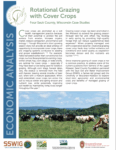
Rotational Grazing with Cover Crops Case Studies
Since rotational grazing of cover crops is not a common practice, to address some of the current questions from farmers in the upper Midwest, the Sand County Foundation of Wisconsin partnered with the Sauk Soil and Water Improvement Group and the University of Wisconsin-Madison to explore short-term agronomic and environmental costs and benefits of managed […]

South Dakota Innovators Build Affordable DIY Roller-Crimper
Ryan Schmid with the Ecdysis Foundation worked with farmers in South Dakota on a do-it-yourself guide and videos for repurposing a disc into a low-cost roller-crimper.

Video Series Highlights How Different Field Practices Impact Moisture and Temperature
Researchers at Ohio State University conducted a multi-year study using soil moisture and temperature sensors to compare the effects of conventional tillage, no-till, and no-till with cover crops on field conditions.
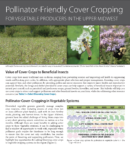
Pollinator-Friendly Cover Cropping for Vegetable Producers in the Upper Midwest
Growers are increasingly interested in adding cover crops to rotations to improve soil health, break disease cycles, and provide ecosystem services. In addition to these benefits, cover crops present an opportunity to add crucial floral resources and habitat for pollinators and other beneficial insects on the farm. However, identifying appropriate cover crop species and management […]
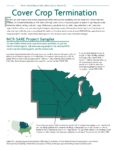
Cover Crop Termination
Farmers use cover crops to slow erosion, improve soil health, enhance water availability, smother weeds, help control pests and diseases, and increase biodiversity on their farms. Although cover crops can be partially grazed or used as forage, they are usually terminated before planting production crops. While row crop producers tend to prefer using herbicides to terminate, most vegetable/horticulture crop producers employ tillage as their primary means of termination. Some organic no-till producers use roller-crimpers to kill the cover crop and leave the mulch on the soil surface to conserve water. NCR-SARE has supported various research projects that have explored the advantages and limits of various cover crop termination strategies.
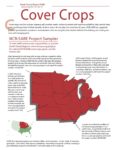
Cover Crops
Cover crops can slow erosion, improve soil, smother weeds, enhance nutrient and moisture availability, help control many pests, and bring a host of other benefits to farms across the country. NCR-SARE has supported projects by researchers, producers, and educators who are using this time-tested method of revitalizing soil, curbing erosion, and managing pests.
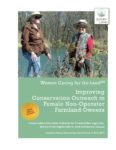
Women Caring for the Land: Improving Conservation Outreach to Female Non-Operator Farmland Owners Curriculum Manual
With the help of an NCR-SARE Research and Education Grant and funding from other sources, WFAN developed an award winning curriculum called Women Caring for the LandSM (WCL), which is designed to serve female non-operator landowners who are interested in learning more about conservation and other land management topics. The materials are also appropriate to teach youth about sustainable agriculture through hands-on conservation activity lesson plans.